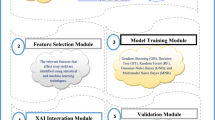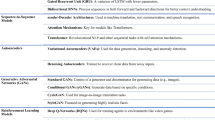Abstract
Anticipating the sugar content of sugarcane crop is a crucial aspect that holds the key to develop innovative data-driven solutions for determining the ideal time of mechanized harvest. However, traditional laboratory-based approaches are laborious, time-consuming, and limited in their scalability. Thus, we explored the potential of integrating multispectral data and cutting-edge artificial intelligence algorithms to predict the sugar content attributes of sugarcane, namely Brix and Purity. The sugarcane quality attributes were measured in a routine laboratory using 510 georeferenced samples from two commercial areas. Crop canopy reflectance values and growing degree days (GDD) were used as inputs on developing predictive models. Two artificial intelligence (AI) algorithms, artificial neural network (ANN) and random forest (RF), and multiple linear regression (MLR) were performed to create the predictive models for mapping the sugarcane quality. The models’ performance proved that RF regression was better for °Brix prediction. In contrast, Purity values were better predicted by ANN algorithm. GDD was the most important variable on performance of RF modeling for both outputs, followed by Green spectral band from satellite imagery. Timely results were achieved integrating satellite imagery and AI-based model on prediction of qualitative attributes for sugarcane. It can provide useful data layers to support site-specific management strategies within season by agroindustry and supporting the decision-making of harvesting in large scale.






Similar content being viewed by others
Data Availability
The database of this study is available on request from the corresponding author.
Code Availability
Not applicable.
References
Bachi, O.O.S., and J.A.G.C. Souza. 1978. Minimum threshold temperature for sugar cane growth. Proceedings of International Society of Sugar Cane Technologists, São Paulo 2: 1733–1741.
Barbosa Júnior, M.R., A.B.R. de Moreira, R.P. de Oliveira, L.S. Shiratsuchi, and R.P. da Silva. 2023. UAV imagery data and machine learning: A driving merger for predictive analysis of qualitative yield in sugarcane. Frontiers in Plant Science 14: 1114852. https://doi.org/10.3389/fpls.2023.1114852.
Bolfe, E.L., L.A.C. Jorge, I.D. Sanches, A. Luchiari Júnior, C.C. da Costa, D.C. Victoria, R.Y. Inamasu, et al. 2020. Precision and digital agriculture: Adoption of technologies and perception of Brazilian farmers. Agriculture 10: 653. https://doi.org/10.3390/agriculture10120653.
Canata, T.F., M.C. Wei, L.F. Maldaner, and J.P. Molin. 2021. Sugarcane yield mapping using high-resolution imagery data and machine learning technique. Remote Sensing 13: 232. https://doi.org/10.3390/rs13020232.
Carneiro, M., M.F.F. de Oliveira, S.L.H. Almeida, A.L.B. Filho, C.E.A. Furlani, G.S. Rolim, A.S. Ferraudo, and R.P. da Silva. 2022. Biophysical characteristics of soybean estimated by remote sensing associated with artificial intelligence. Bioscience Journal 38: e38024. https://doi.org/10.14393/BJ-v38n0a2022-55925.
Chea, C., K. Saengprachatanarug, J. Posom, M. Wongphati, and E. Taira. 2020. Sugar yield parameters and fiber prediction in sugarcane fields using a multispectral camera mounted on a small unmanned aerial system (UAS). Sugar Tech 22: 605–621. https://doi.org/10.1007/s12355-020-00802-5.
Chea, C., K. Saengprachatanarug, J. Posom, K. Saikaew, M. Wongphati, and E. Taira. 2022. Optimal models under multiple resource types for Brix content prediction in sugarcane fields using machine learning. Remote Sensing Applications: Society and Environment 26: 100718. https://doi.org/10.1016/j.rsase.2022.100718.
Consecana. 2015. Instructions manual (6th ed., 81p). National Council of Sugarcane Producers of São Paulo State (in Portuguese).
Cursi, D.E., H.P. Hoffmann, G.V.S. Barbosa, J.A. Bressiani, R. Gazaffi, R.G. Chapola, A.R. Fernandes Junior, T.W.A. Balsalobre, C.A. Diniz, J.M. Santos, and M.S. Carneiro. 2022. History and current status of sugarcane breeding, germplasm development and molecular genetics in Brazil. Sugar Tech 24: 112–133. https://doi.org/10.1007/s12355-021-00951-1.
de Corrêdo, L.P., and M.C.F.M.N.J.P. FerrazWeiMolin. 2021. Near-infrared spectroscopy as a tool for monitoring the spatial variability of sugarcane quality in the fields. Biosystems Engineering 206: 150–161. https://doi.org/10.1016/j.biosystemseng.2021.04.001.
de Oliveira, R.P., M.R. Barbosa Júnior, A.A. Pinto, J.L.P. Oliveira, C. Zerbato, and C.E.A. Furlani. 2022. Predicting sugarcane biometric parameters by UAV multispectral images and machine learning. Agronomy 12: 1992. https://doi.org/10.3390/agronomy12091992.
Gomes, F., and C.H. Garcia. 2002. Estatística aplicada a experimentos agronômicos e florestais. Piracicaba: FEALQ, 305p. (in Portuguese).
Günther, F., and S. Fritsch. 2010. Neuralnet. training of neural networks. The R Journal 2: 30–38.
Jiao, S., Y. Gao, J. Feng, T. Lei, and Y. Xiaocong. 2020. Does deep learning always outperform simple linear regression in optical imaging? Optics Express 28: 3717–3731. https://doi.org/10.1364/OE.382319.
Kamalov, F., I. Gurib, and K. Rajab. 2021. Financial forecasting with machine learning: Price versus return. Journal of Computer Science 17: 251–264. https://doi.org/10.3844/jcssp.2021.251.264.
Liaw, A., and M. Wiener. 2002. Classification and regression by randomforest. R News 2: 18–22.
Lindner, T., J. Puck, and A. Verbeke. 2022. Beyond addressing multicollinearity: Robust quantitative analysis and machine learning in international business research. Journal of International Business Studies 53: 1307–1314. https://doi.org/10.1057/s41267-022-00549-z.
Maldaner, L.F., L.P. Corrêdo, T.F. Canata, and J.P. Molin. 2021. Predicting the sugarcane yield in real-time by harvester engine parameters and machine learning approaches. Computers and Electronics in Agriculture 181: 105945. https://doi.org/10.1016/j.compag.2020.105945.
Martins, M.B., A.C.M. Filho, L.S. Santana, F.P.A.P. Bortlheiro, and K.G.P. da Silva. 2023. Sugarcane harvester: A bibliometric review. Sugar Tech 25: 1316–1327. https://doi.org/10.1007/s12355-023-01286-9.
Montanari, R., J.J. Marques, M.C.C. Campos, Z.M. de Souza, and L.V. de Camargo. 2010. Characterization mineralogical of oxisol in different relief form in the region of Jaboticabal, SP. Revista Ciência Agronômica 41: 191–199. https://doi.org/10.1590/S1806-66902010000200004.
Morota, G., R. Ventura, F.F. Silva, M. Koyama, and S.C. Fernando. 2018. Machine learning and data mining advance predictive big data analysis in precision animal agriculture. Journal of Animal Science 96: 1540–1550. https://doi.org/10.1093/jas/sky014.
Neter, J., M.H. Kutner, C.J. Nachtsheim, and W. Wasserman. 1996. Applied linear statistical models, 318. Newyork: McGraw-Hill/Irwin.
Phuphaphud, A., K. Saengprachatanarug, J. Posom, K. Maraphum, and E. Taira. 2019. Prediction of the fiber content of sugarcane stalk by direct scanning using visible shortwave near infrared spectroscopy. Vibrational Spectroscopy 101: 71–80. https://doi.org/10.1016/j.vibspec.2019.02.005.
Ryckewaert, M., D. Héran, C. Feilhes, F. Prezman, E. Serrano, A. Courand, S. Mas-Garcia, M. Metz, and R. Bendoula. 2023. Dataset containing spectral data from hyperspectral imaging and sugar content measurements of grapes berries in various maturity stage. Data in Brief 46: 108822. https://doi.org/10.1016/j.dib.2022.108822.
Schwalbert, R., T. Amado, L. Nieto, G. Corassa, C. Rice, N. Peralta, B. Schauberger, C. Gornott, and I. Ciampitti. 2020. Mid-season county-level corn yield forecast for US Corn Belt integrating satellite imagery and weather variables. Crop Science 60 (2): 739–750. https://doi.org/10.1002/csc2.20053.
Sheikh, J.A., S.M. Cheema, M. Ali, Z. Amjad, J.Z. Tariq, and A. Naz. 2021. IoT and AI in precision agriculture: Designing smart system to support illiterate farmers. In Advances in artificial intelligence, software and systems engineering advances in intelligent systems and computing, vol. 1213, ed. T. Ahram, 490–496. NewYork: Springer International Publishing.
Siedliska, A., P. Baranowski, J. Pastuszka-Woźniak, M. Zubik, and J. Krzyszczak. 2021. Identification of plant leaf phosphorus content at different growth stages based on hyperspectral reflectance. BMC Plant Biology 21: 1–17. https://doi.org/10.1186/s12870-020-02807-4.
Simeone, M.L.F., R.A.C. Parrella, R.E. Schaffert, C.M.B. Damasceno, M.C.B. Leal, and C. Pasquini. 2017. Near infrared spectroscopy determination of sucrose, glucose, and fructose in sweet sorghum juice. Microchemical Journal 134: 125–130. https://doi.org/10.1016/j.microc.2017.05.020.
Todd, J., R. Johnson, D. Verdun, and K. Richard. 2022. Identification of selection preferences and predicting yield related traits in sugarcane seedling families using RGB spectral indices. Agriculture 12: 1313. https://doi.org/10.3390/agriculture12091313.
Wang, M., Z. Liu, M.H. Ali Baig, Y. Wang, Y. Li, and Y. Chen. 2019. Mapping sugarcane in complex landscapes by integrating multi-temporal Sentinel-2 images and machine learning algorithms. Land Use Policy 88: 104190. https://doi.org/10.1016/j.landusepol.2019.104190.
Wang, Q., Y. Che, K. Shao, J. Zhu, R. Wang, Y. Sui, Y. Guo, B. Li, L. Meng, and Y. Ma. 2022. Estimation of sugar content in sugar beet root based on UAV multi-sensor data. Computers and Electronics in Agriculture 203: 107433. https://doi.org/10.1016/j.compag.2022.107433.
Wei, M.C.F., L.F. Maldaner, P.M.N. Ottoni, and J.P. Molin. 2020. Carrot yield mapping A precision agriculture approach based on machine learning. AI 1: 229–241. https://doi.org/10.3390/ai1020015.
Yue, J., H. Feng, G. Yang, and Z. Li. 2018. A comparison of regression techniques for estimation of above-ground winter wheat biomass using near-surface spectroscopy. Remote Sensing 10: 66. https://doi.org/10.3390/rs10010066.
Zheng, Y., Z. Li, B. Pan, S. Lin, J. Dong, X. Li, and W. Yuan. 2022. Development of a phenology-based method for identifying sugarcane plantation areas in China using high-resolution satellite datasets. Remote Sensing 14: 1274. https://doi.org/10.3390/rs14051274.
Žibrat, U., N. Susič, M. Knapič, S. Širca, P. Strajnar, et al. 2019. Pipeline for imaging, extraction, pre-processing, and processing of time-series hyperspectral data for discriminating drought stress origin in tomatoes. MethodsX 6: 399–408. https://doi.org/10.1016/j.mex.2019.02.022.
Acknowledgements
This study was financed in part by the Coordenação de Aperfeiçoamento de Pessoal de Nível Superior—Brasil (CAPES)—Finance Code 001; to the Laboratory of Machinery and Agricultural Mechanization (LAMMA) of the Department of Engineering from School of Agricultural and Veterinarian Sciences, São Paulo State University (UNESP) for the infrastructural support; to the Industrial Process Laboratory of the Faculty of Technology (FATEC Jaboticabal) for the laboratory analysis of the samples.
Funding
This work was supported in part by São Paulo Research Foundation (FAPESP) (2022/13992-0).
Author information
Authors and Affiliations
Contributions
Conceptualization and methodology were performed by RPS, CEAF, TFC, MRBJr, and RPS; data collection by MRBJr, RPO, and TFC; formal analysis by TFC and MRBJr. All authors revised the manuscript.
Corresponding author
Ethics declarations
Conflict of interest
The authors declare that there are no conflicts of interest regarding the publication of this paper.
Ethical Approval
Not applicable.
Consent to Participate
Not applicable.
Consent for Publication
Not applicable.
Additional information
Publisher's Note
Springer Nature remains neutral with regard to jurisdictional claims in published maps and institutional affiliations.
Rights and permissions
Springer Nature or its licensor (e.g. a society or other partner) holds exclusive rights to this article under a publishing agreement with the author(s) or other rightsholder(s); author self-archiving of the accepted manuscript version of this article is solely governed by the terms of such publishing agreement and applicable law.
About this article
Cite this article
Canata, T.F., Júnior, M.R.B., de Oliveira, R.P. et al. AI-Driven Prediction of Sugarcane Quality Attributes Using Satellite Imagery. Sugar Tech (2024). https://doi.org/10.1007/s12355-024-01399-9
Received:
Accepted:
Published:
DOI: https://doi.org/10.1007/s12355-024-01399-9




